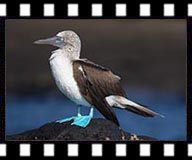Day 6 (Friday, May 25): Santiago Island (Puerto Egas) and Rabida Island
After another long night's sailing on one and half engines (the crew patched up the overheated engine, but it wasn't at full power), we reached Puerto Egas on Santiago Island in the morning.
(Click on each image to see the high-resolution version)
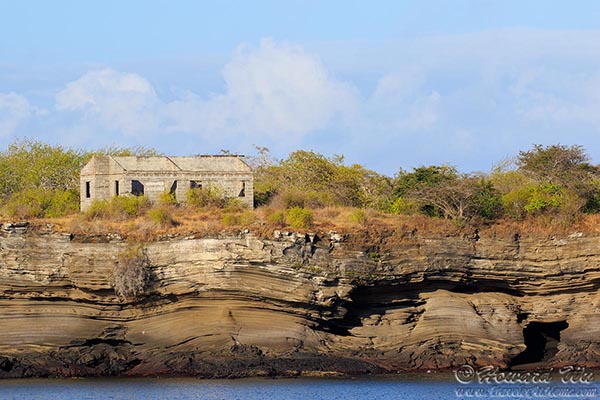
Puerto Egas
Even when we were still on the panga to the landing spot, something magic happened -- a Blue-footed Booby was standing on a rock in the beautiful early morning light! We had seen some Blue-footed Boobies at sea by that time, but they were always far and fast flying; our itinerary would not take us to any nesting site of this iconic Galapagos bird. I started to worry that I might not get a good picture of this goofy-looking bird. All my worries evaporated this morning -- this bird was totally unconcerned with us and posed for us, even showing us its comical, clownish expression (the word "booby" derives from "bobo" in Spanish which means fool or clown).
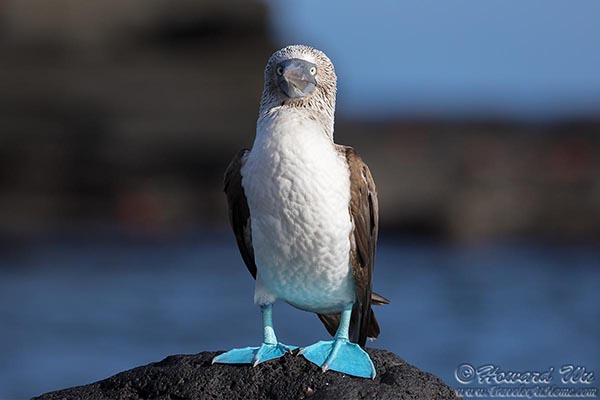
Blue-footed Booby
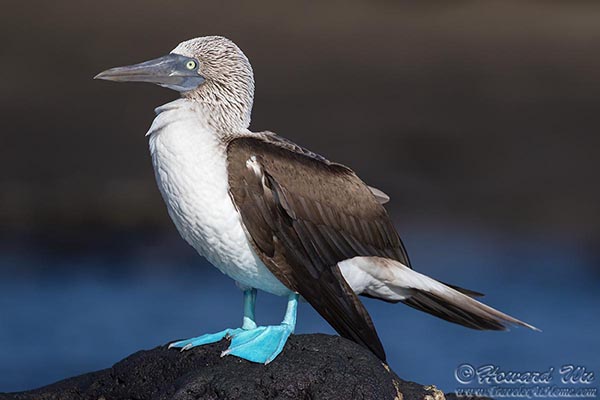
Blue-footed Booby
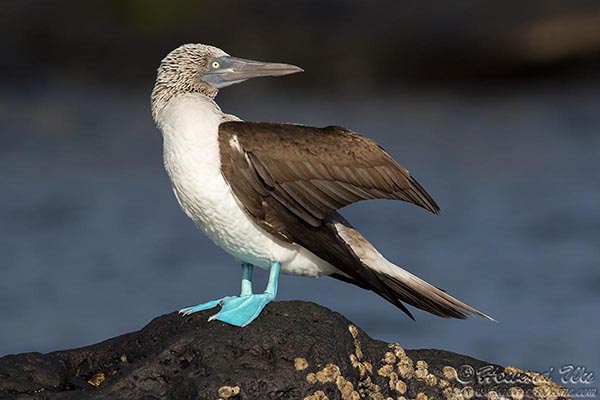
Blue-footed Booby

Blue-footed Booby
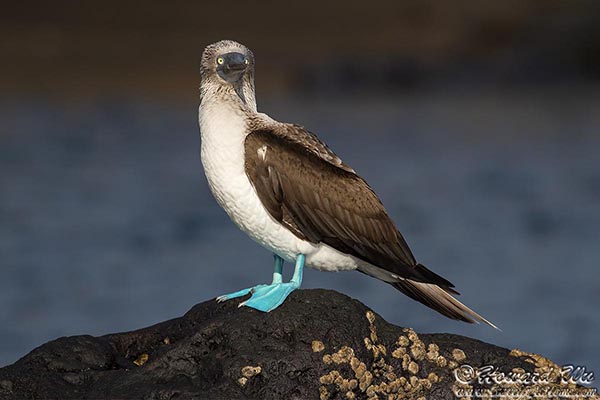
Blue-footed Booby
On the beach, an American Oystercatcher was leisurely foraging. This is a bird that I had seen in North America before, but here in the Galapagos, they seemed to have lost their fear of people and let us get within close range (or sometimes it walked near us).
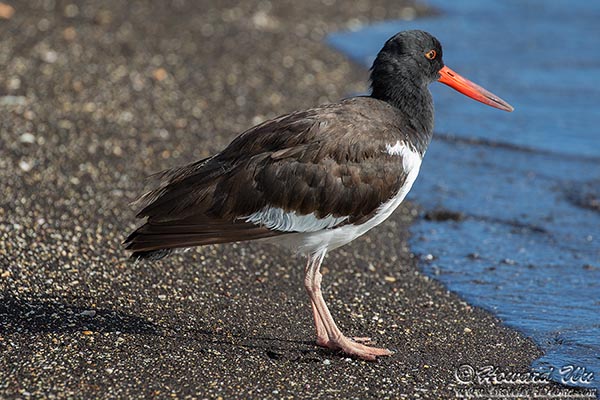
American Oystercatcher

American Oystercatcher
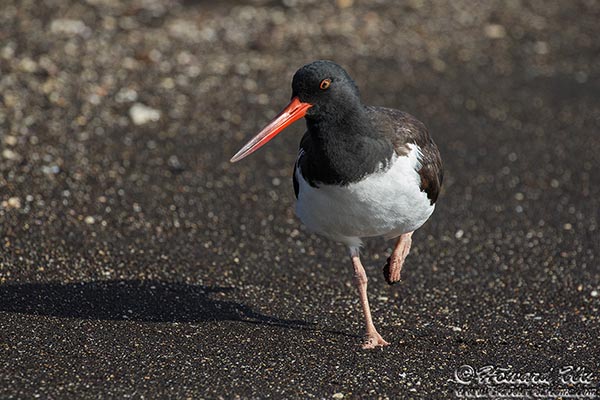
American Oystercatcher
Also on the beach I saw some burrowing Ghost Crabs, but they were much more jittery and retreated to their burrow if I tried to get close.
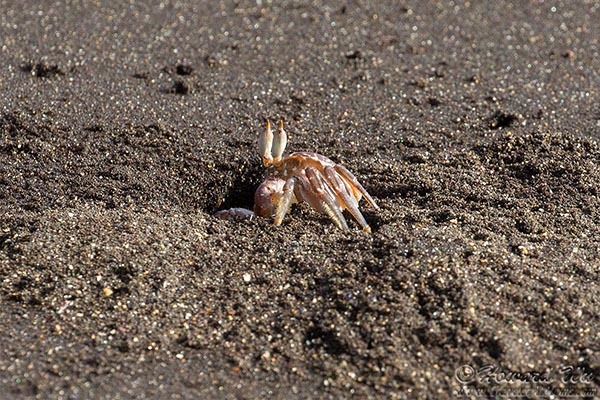
Ghost Crab
Even a Galapagos Mockingbird landed on the beach, and as we took the trail inland, we saw more of them.
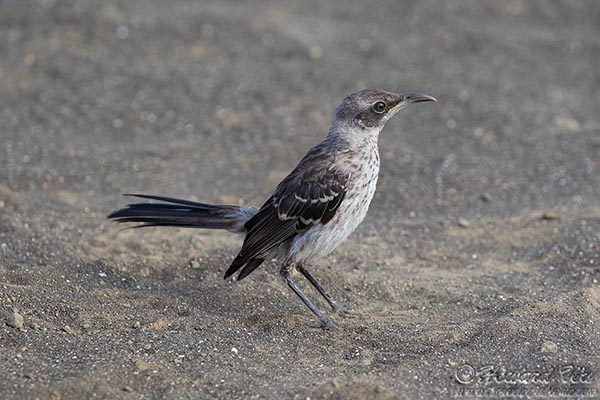
Galapagos Mockingbird
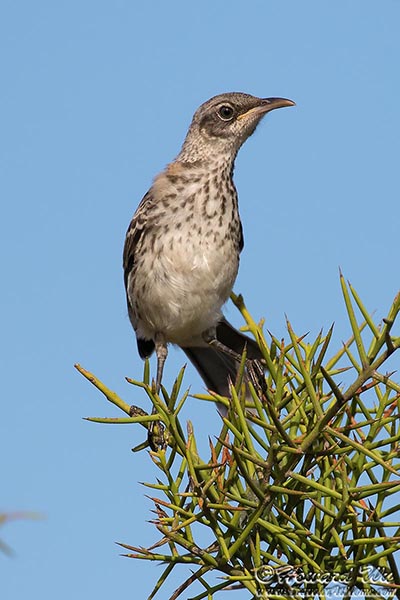
Galapagos Mockingbird
Lava Lizards were scurrying on the dusty ground along the trail. One of them caught a Large Painted Locust and greedily devoured it.
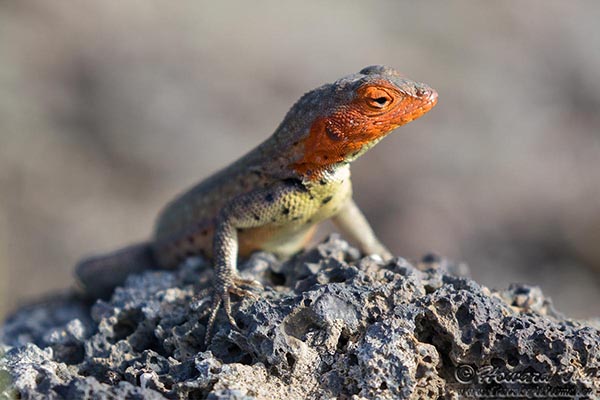
Lava Lizard
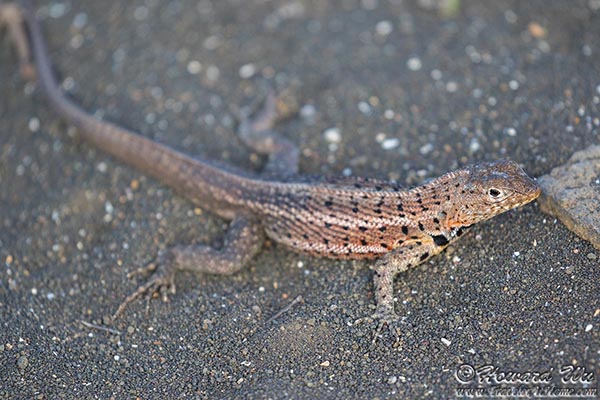
Lava Lizard

Lava Lizard
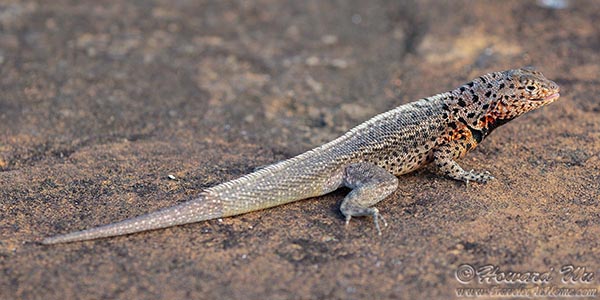
Lava Lizard
As we hiked closer to the tidal pools near the coast, Sally Lightfoot Crabs appeared on the black lava rocks.
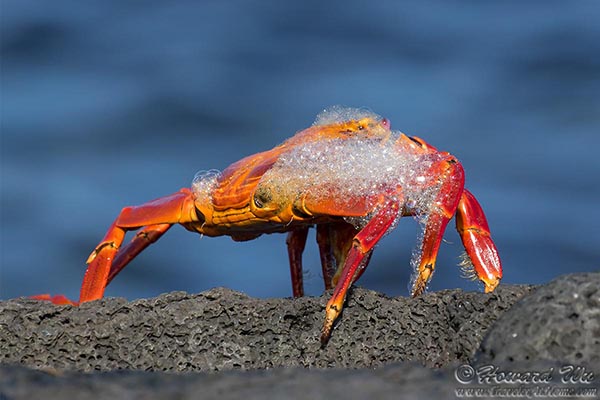
Sally Lightfoot Crab
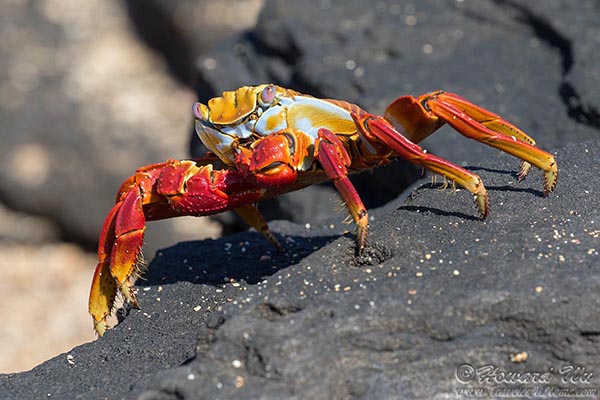
Sally Lightfoot Crab
We saw another American Oystercatcher, but this one had two eggs in its "nest" (which is but a depression in the sand) and was incubating them. I did not get too close to it in order not to stress it; it seemed quite unconcerned with people nearby.
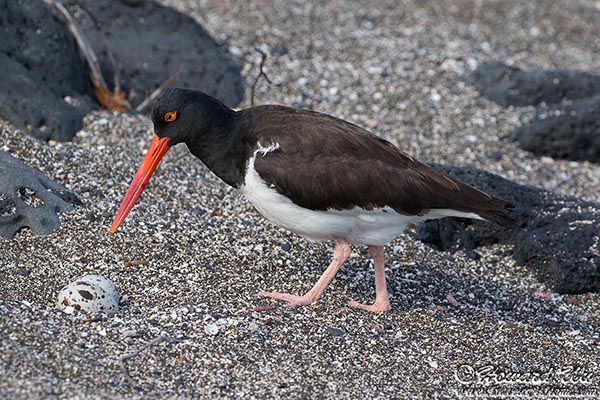
American Oystercatcher

American Oystercatcher
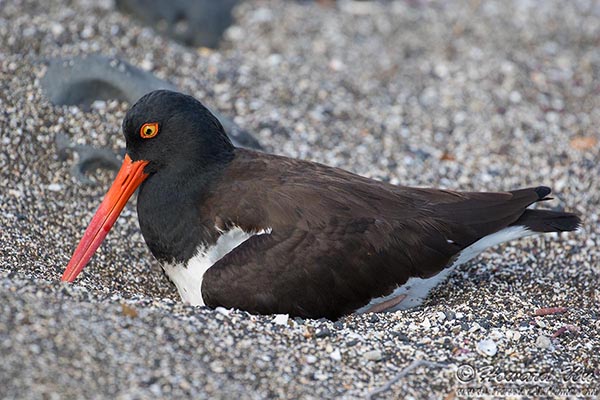
American Oystercatcher
Of course, there were Marine Iguanas. At this time (early in the morning), most of them were still sunning themselves to heat up their body before they could dive into the water to feed on the algae.

Marine Iguana
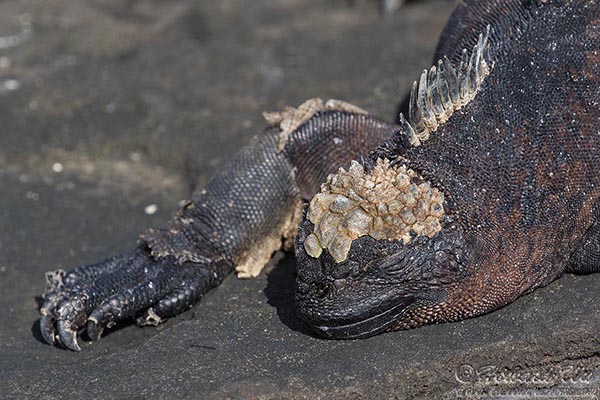
Marine Iguana
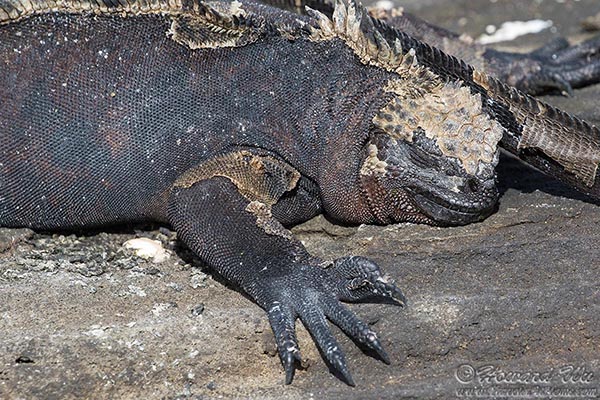
Marine Iguana
But nature has its cycles and is not always nice and peaceful. We found the desiccated carcass of a dead Marine Iguana on the rocks.

Dead Marine Iguana
Striated Herons stalked the tidal pools along the coast.

Striated Heron
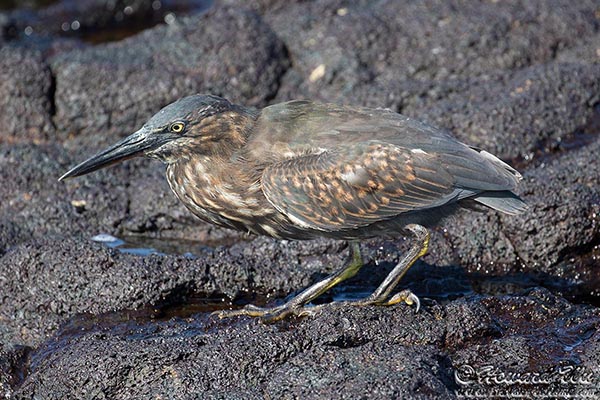
Striated Heron
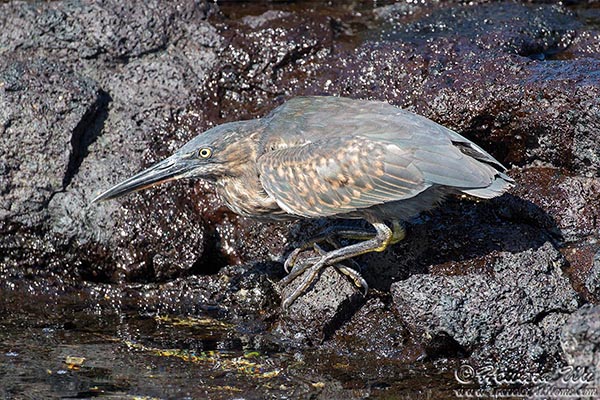
Striated Heron
In one cave, we found a pair of nesting Yellow-crowned Night Herons. This is a bird that can be found in North America, and seeing it was like seeing an old friend in this far-flung place.

Yellow-crowned Night Heron
A Galapagos Dove was also foraging among the rocks.
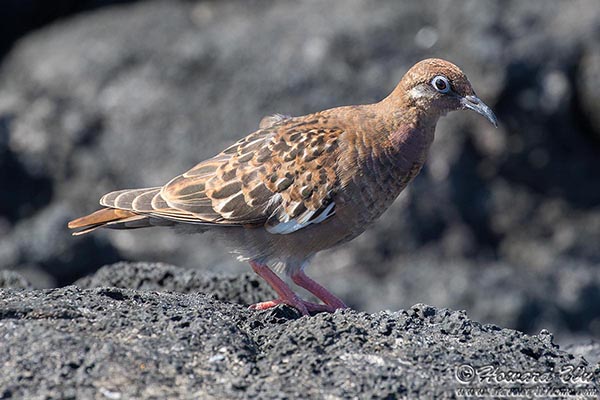
Galapagos Dove
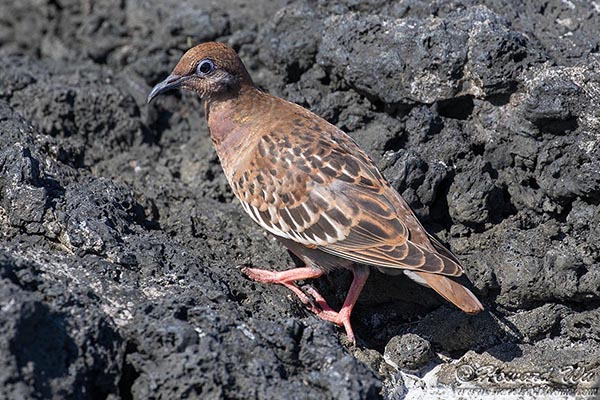
Galapagos Dove
The star of Santiago Island is the Galapagos Fur Seal. Actually its name is a misnomer and it is more closely related to sea lions than seals. Once driven near extinction because of hunting, today it is still endangered but making a slow comeback thanks to conservation efforts.
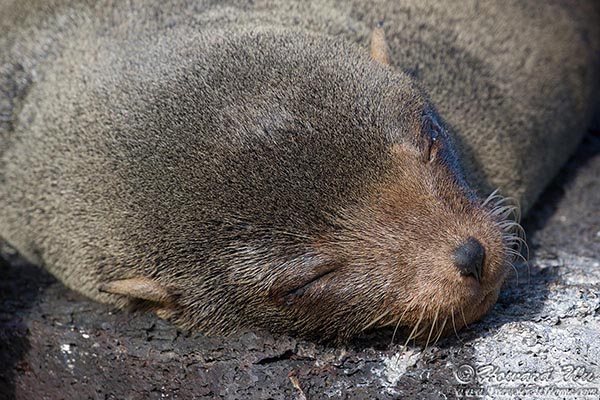
Galapagos Fur Seal
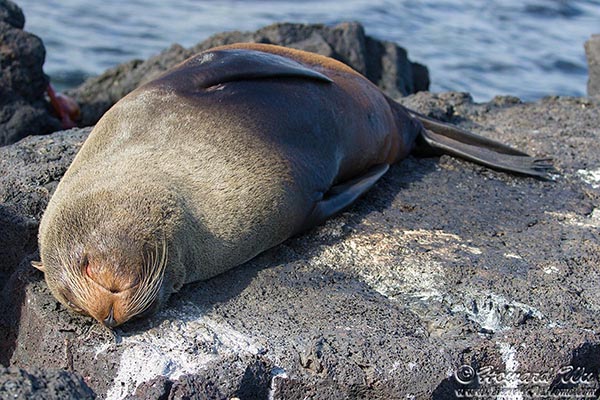
Galapagos Fur Seal
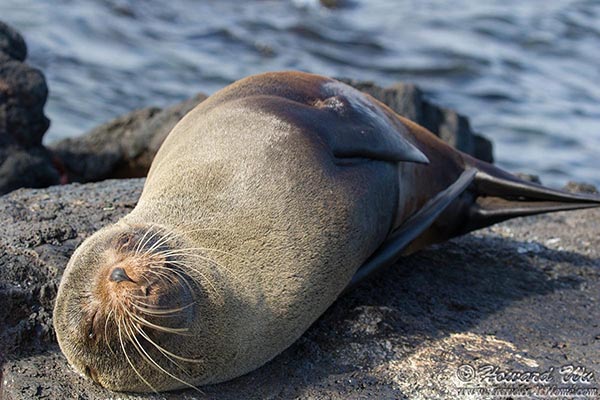
Galapagos Fur Seal
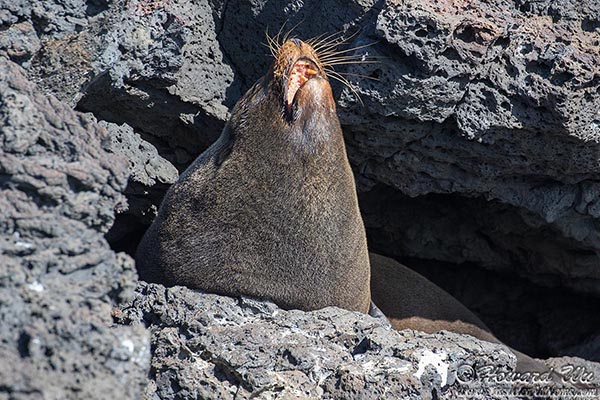
Galapagos Fur Seal

Galapagos Fur Seals
Besides the wildlife, the rock formations on the coast of Santiago Island also offered a fascinating study. The rocks are volcanic in origin, but some were apparently eroded by natural forces such as water and wind.
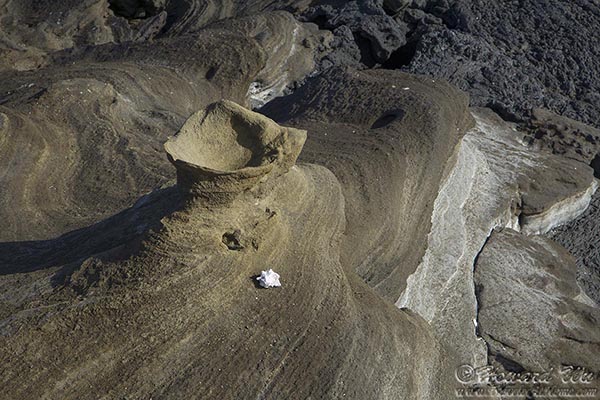
Rock Formation
The rugged coast of Santiago Island offers breathtaking views.
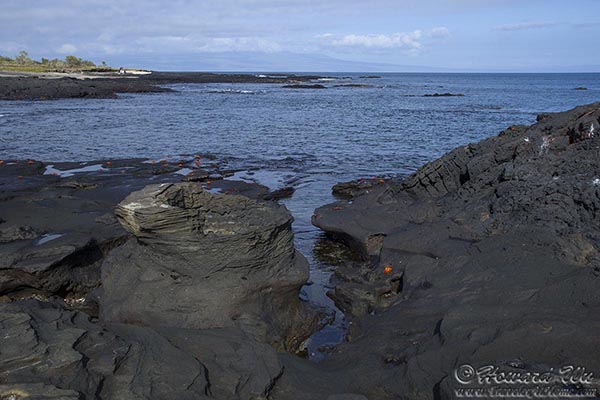
Coast on Santiago Island
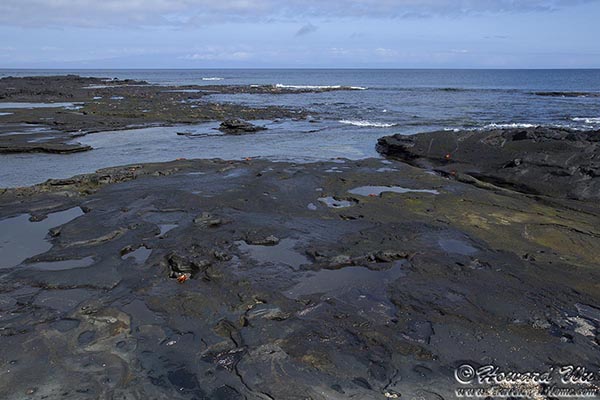
Coast on Santiago Island
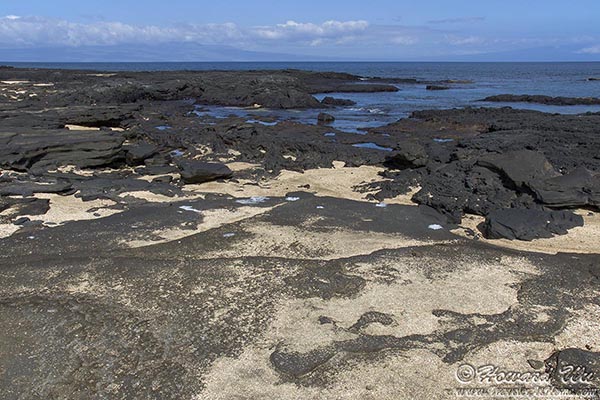
Coast on Santiago Island
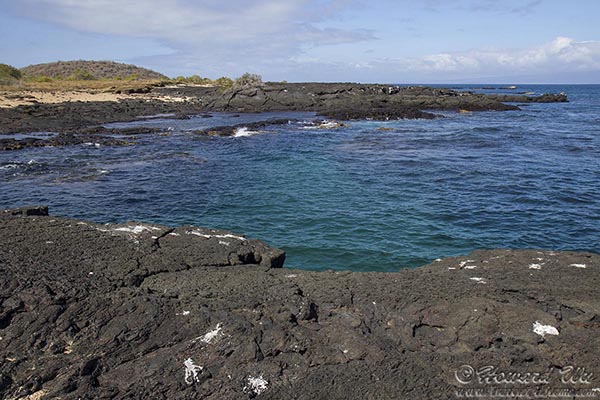
Coast on Santiago Island
We hiked to a place called "The Grottos", where we could volcanic rock formations such as submerged sea arches.
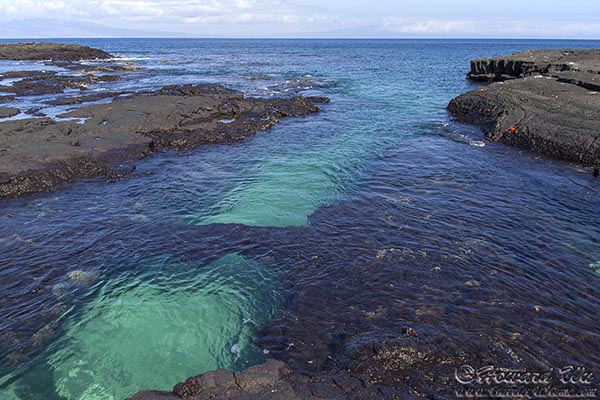
Coast on Santiago Island
Some of them are above water, forming rock bridges. Sometimes Galapagos Fur Seals play in the pools behind those bridges.
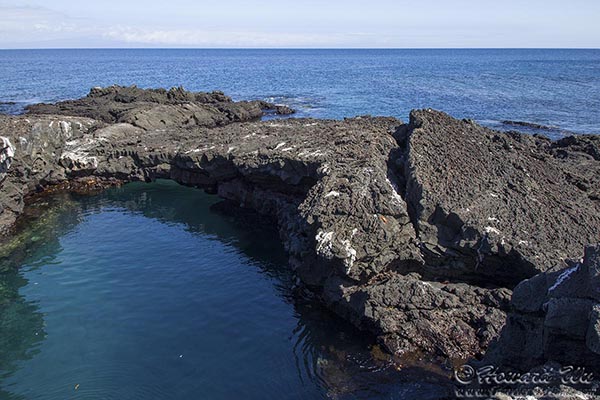
Sea Arch
On the return hike, I photographed a Large Painted Locust, another Galapagos endemic, at close range.
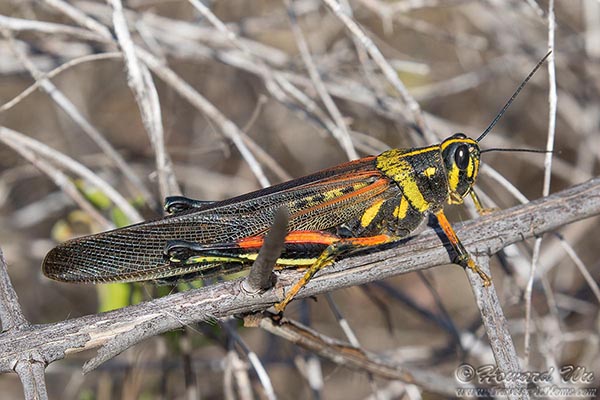
Large Painted Locust
As we pulled away from our only stop on this island, I snapped a few pictures of it.
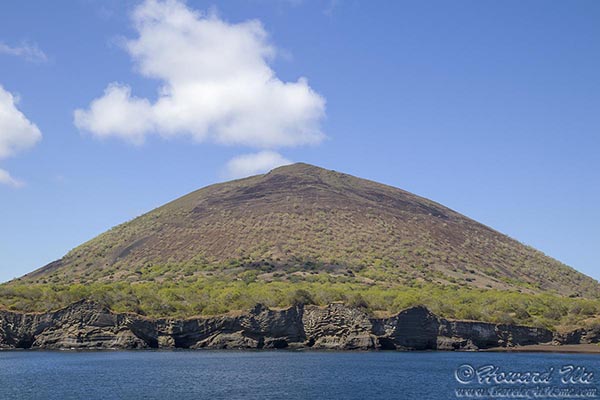
Santiago Island
In the afternoon we reached Rabida Island, a small Island considered the geographic center of Galapagos. The high iron content in the volcanic rocks of this island gives it a distince dark red color, even the sand on the beach is of the same color.
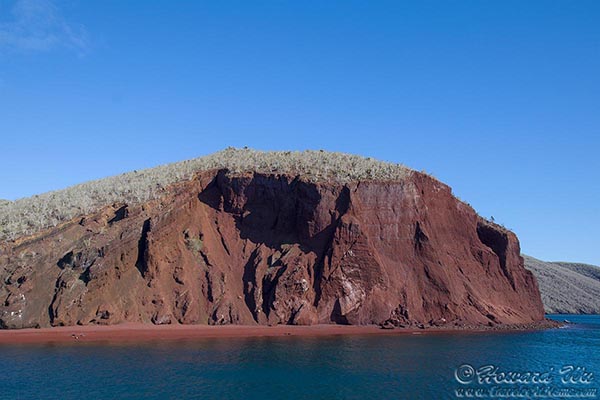
Rabida Beach
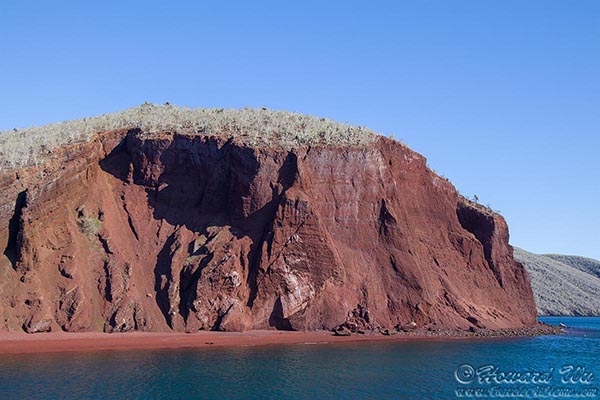
Rabida Beach
We hiked a short distance to the back side of the island, where beyond the cactus-lined red rock coast, a protected cove extended to the open ocean which formed a very fine view (the yacht in the second picture is the Eric, the sister yacht of our own Letty).
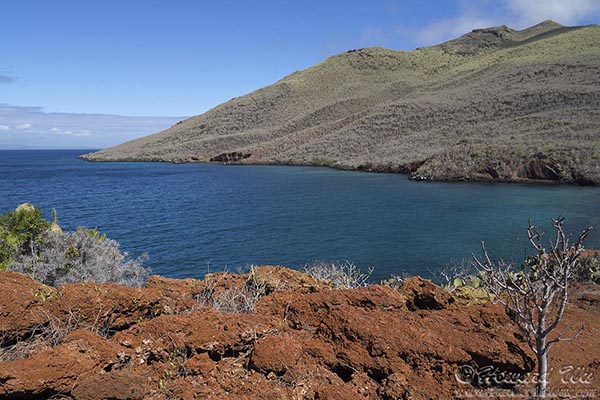
Rabida Island
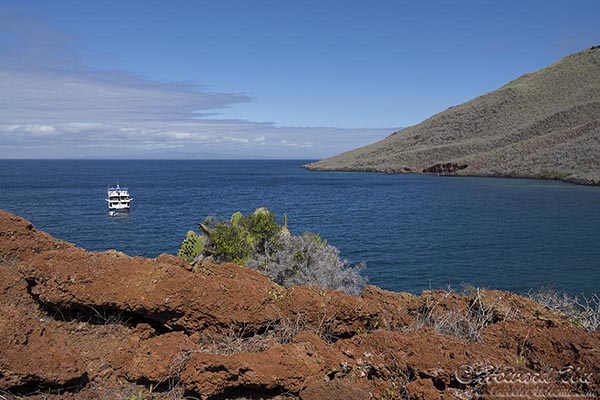
Rabida Island
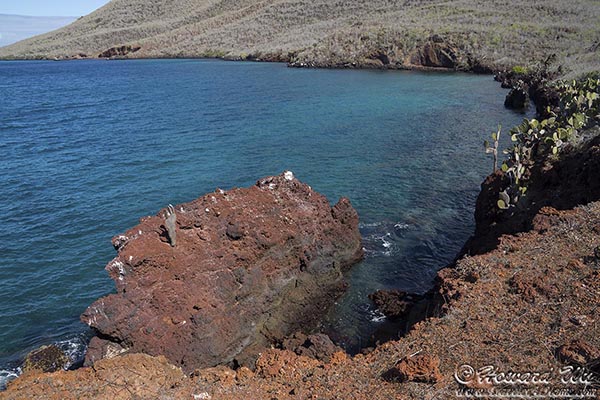
Rabida Island
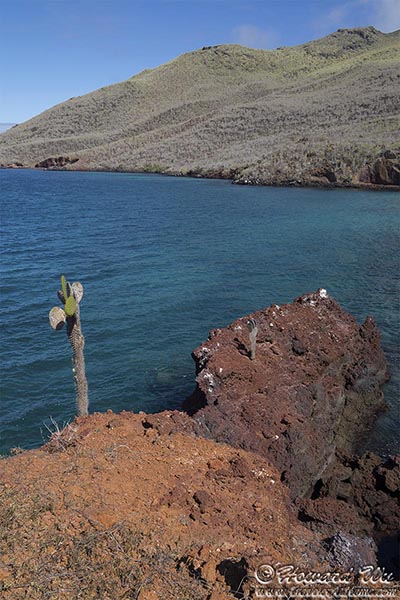
Rabida Island
A few nesting Brown Noddies on the rock ledges close to the beach gave excellent views. These terns are fast flying birds and although I had seen them before, it was usually at a distance in the open water. This was the first time I got such close views of them.
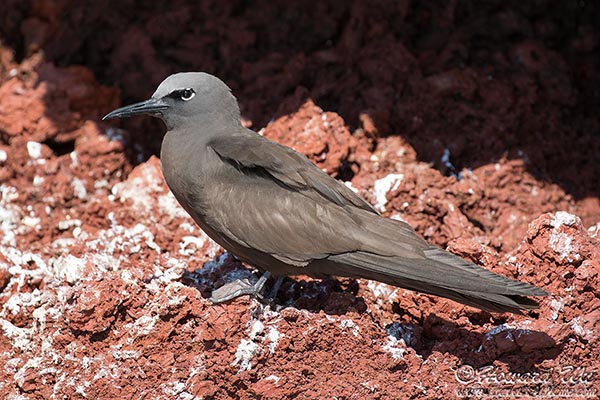
Brown Noddy
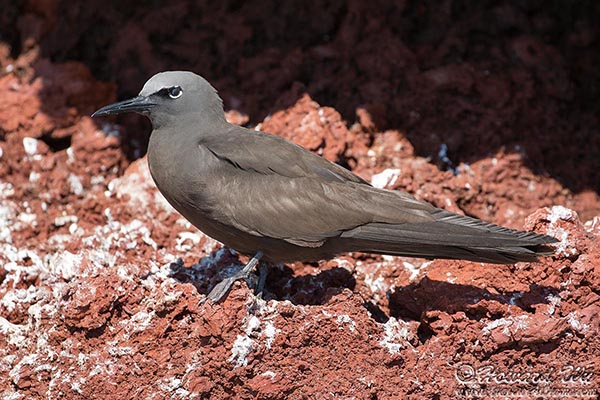
Brown Noddy
We spent the rest of our time on Rabida Island snorkling, our last session on this trip. The water is shallow near the beach and light was good, but there weren't as many underwater wildlife as in other places such as Tagus Cove, although we did see a group of Golden Rays (not shown) near shore.
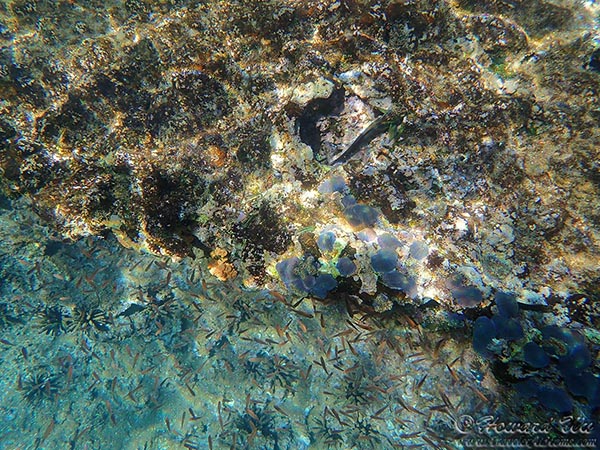
Reef
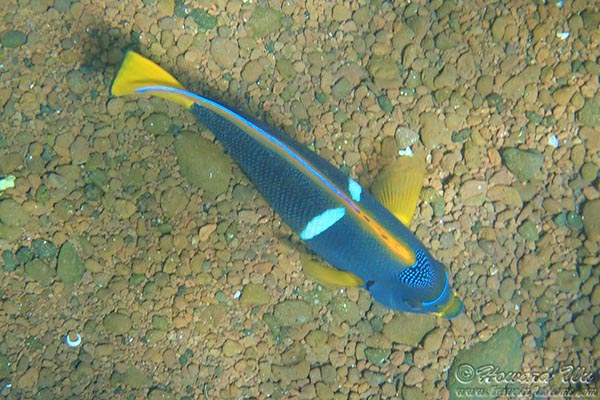
King Angelfish

King Angelfish
Click the image below to return to the index page of Spring 2018 trip to the Galapagos:
